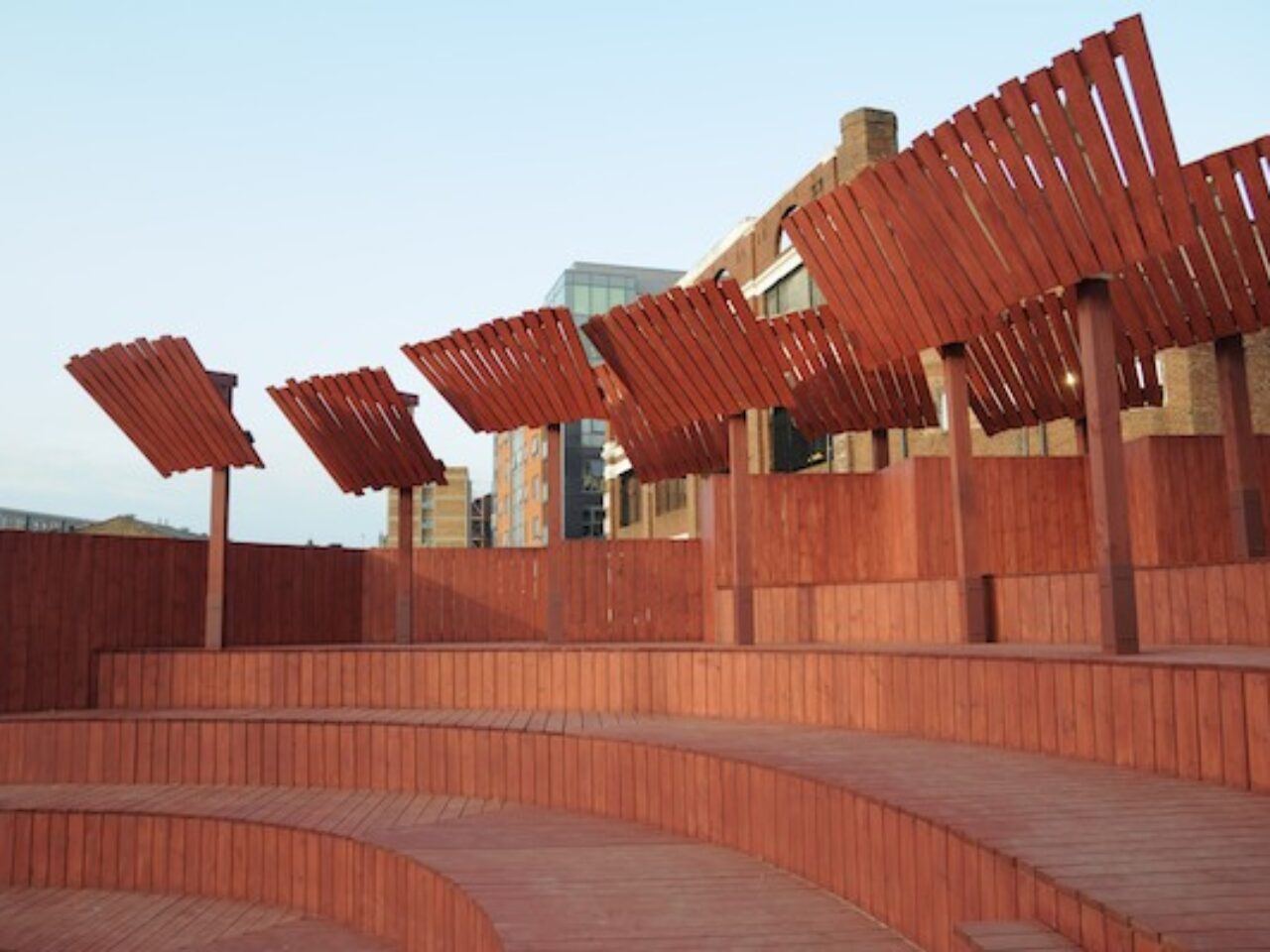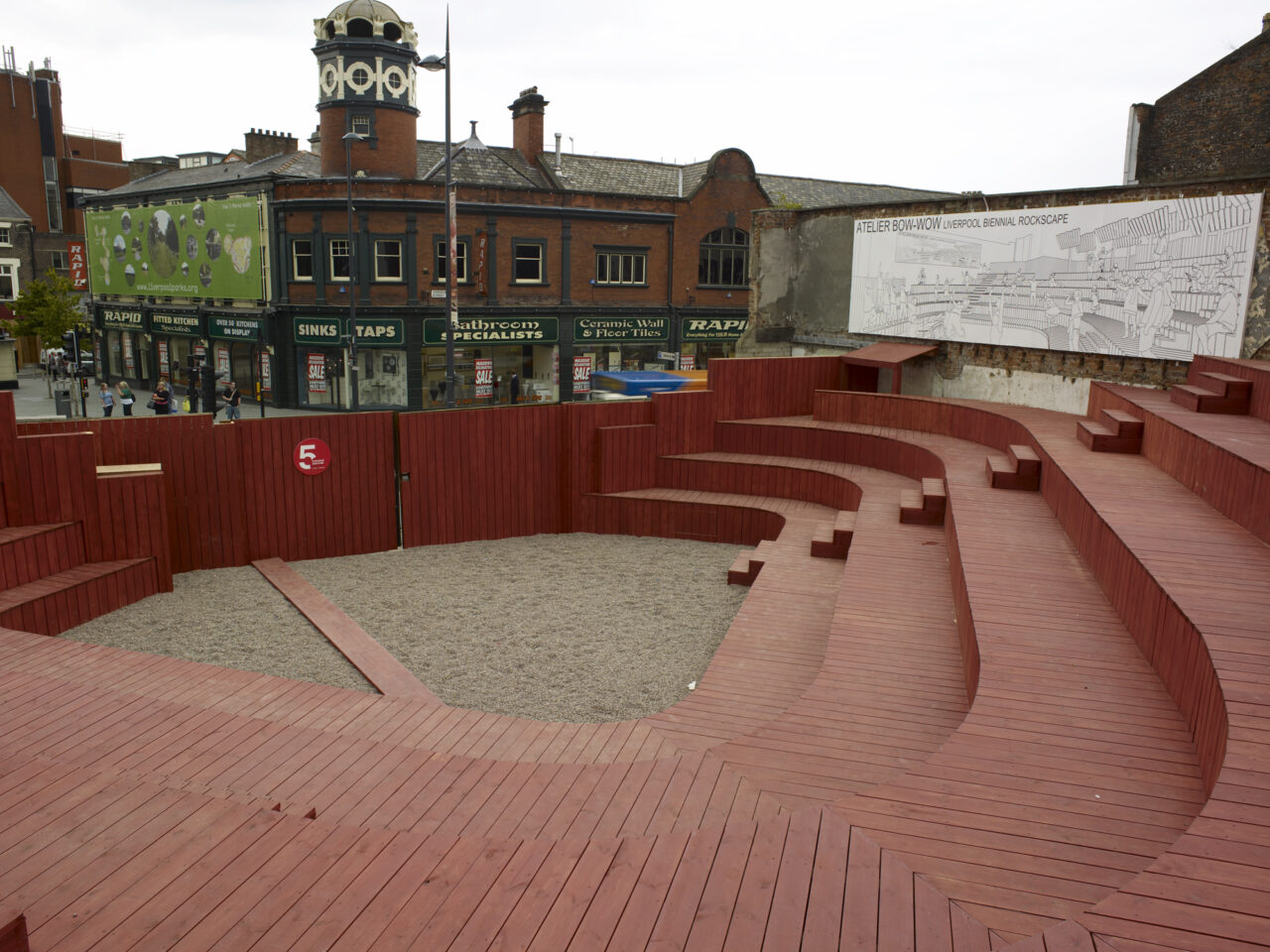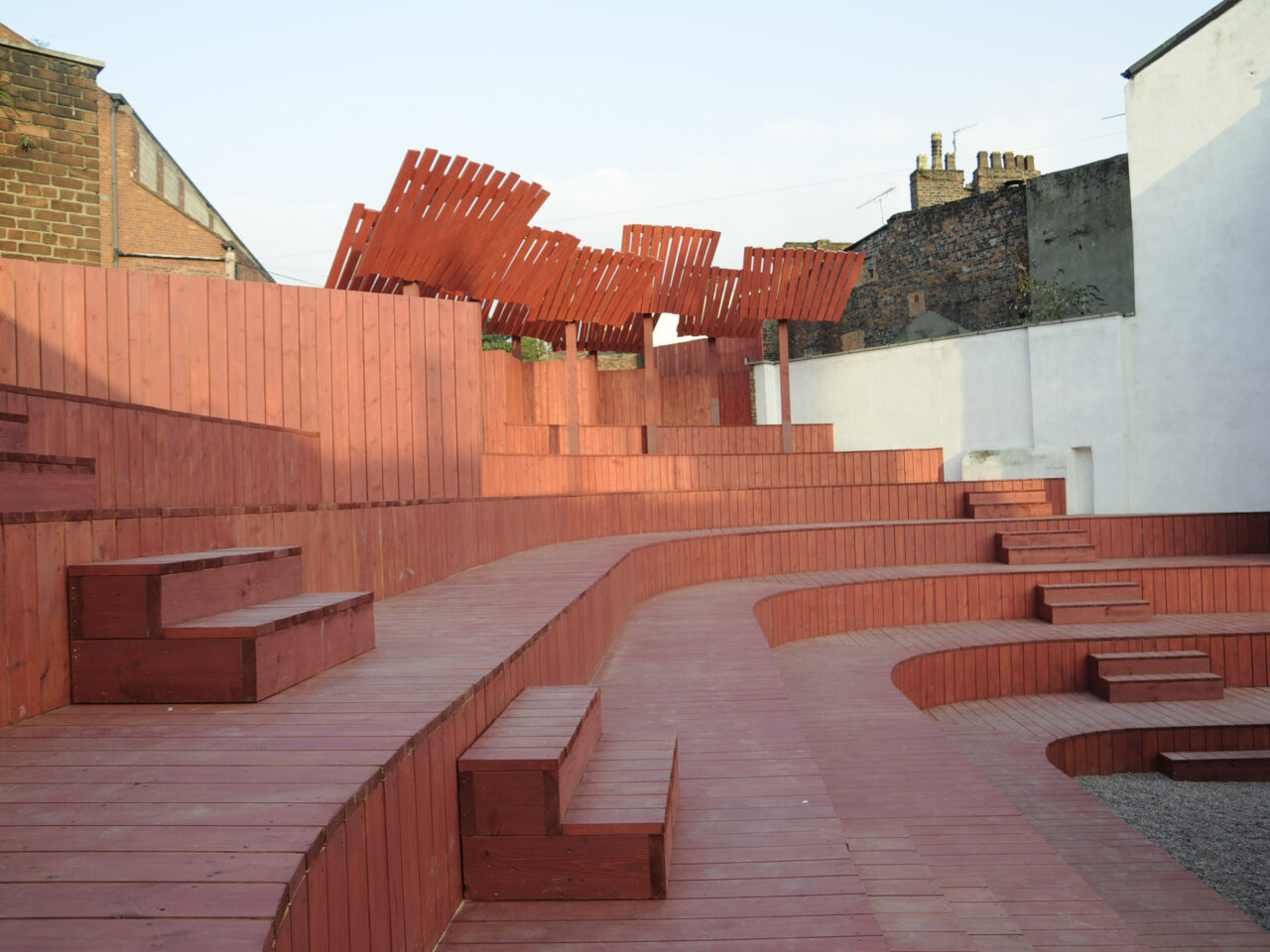The title of their practice, Atelier Bow-Wow, is a humorous celebration of exactly this refraining of the universal to suit local context.
2008 Biennial Year Find out more
Altelier Bow-Wow founded in 1992 by Yoshiharu Tsukamoto and Momoyo Kajima’s, is dedicated to the “practice of lively space”. ‘Lively’ encapsulates the playfulness inherent in all their structures, but also illustrates their fascination with and commitment to the creation of flexible ‘living’ structures that can be moulded and adapted through use.
The title of their practice, Atelier Bow-Wow, is a humorous celebration of exactly this refraining of the universal to suit local context. The sound of a dog barking remains the same the world over, and yet the approximation of that sound into language differs greatly from country to country. ‘Bow-wow’ or ‘woof woof’ in English, becomes ‘bau bau’ in Italy, or ‘wan wan’ in Japan. The sound of a dog’s bark depends entirely on its audience, and so in their native city of Tokyo, Atelier Bow-Wow is known as Atelier Wan-Wan.
Atelier Bow-Wow’s Pet Architecture Guidebook (2001) documents the thousands of small structures found all over Tokyo designed not by architects but by their users as ingenious solutions to the shortage of ground space in a densely populated city. Their own structures seek to embody precisely this flexible and symbiotic relationship between form, space and function. Manga Pod (2002) for example, a structure specifically designed for relaxing with Manga comics, is a flexible shelving unit made from recyled paper, which expanded or contracted to embrace its readers.
For MADE UP, Atelier Bow-Wow brought an open air theatre to the heart of the city centre. Situated on a derelict site whose hoarding carried flyposters to advertise the local music scene, Rockscape transformed the site itself into a venue for music and performance. Rockscape took its inspiration from the sandstone that (as much as the music) formed the bedrock of the city, and married rocky topography with the classical form of the ancient Greek theatre, creating a stepped structure extruding from the contours of the irregularly shaped site. In the absence of scheduled performances, the city itself took centre stage, as visitors became spectators enjoying commanding views of the surrounding area.
‘To change the Japanese government, you could begin by altering the seating arrangement in parliament,’ Tsukamoto said in a interview. This statement illustrated Atelier Bow-Wow’s belief that form should not only be responsive to use, but it should promote behavioural change. Puppet Theatre (2007) a space designed for hosting puppetry performances is a gesture towards preserving a dying art form – the rich folk art of puppetry practised by Tsukamoto’s mother and numerous women of her generation, now slowly erodes as a result of changes in Japanese society.
Every weekend during the festival, local musicians, poets and dancers were invited to perform at the theatre.
Rockscape, 2008
Construction shot
Commissioned by Liverpool Biennial Biennial 2008
Exhibited at 95-99 Renshaw Street
SUPPORTED BY
The Liverpool Culture Company Limited (2008 Capital of Culture programme)
Northwest Regional Development Agency
EU-Japan Fest
The Great Britain Sasakawa Foundation
The Japan Foundation
The Daiwa Anglo-Japanese Foundation
Japan-UK



